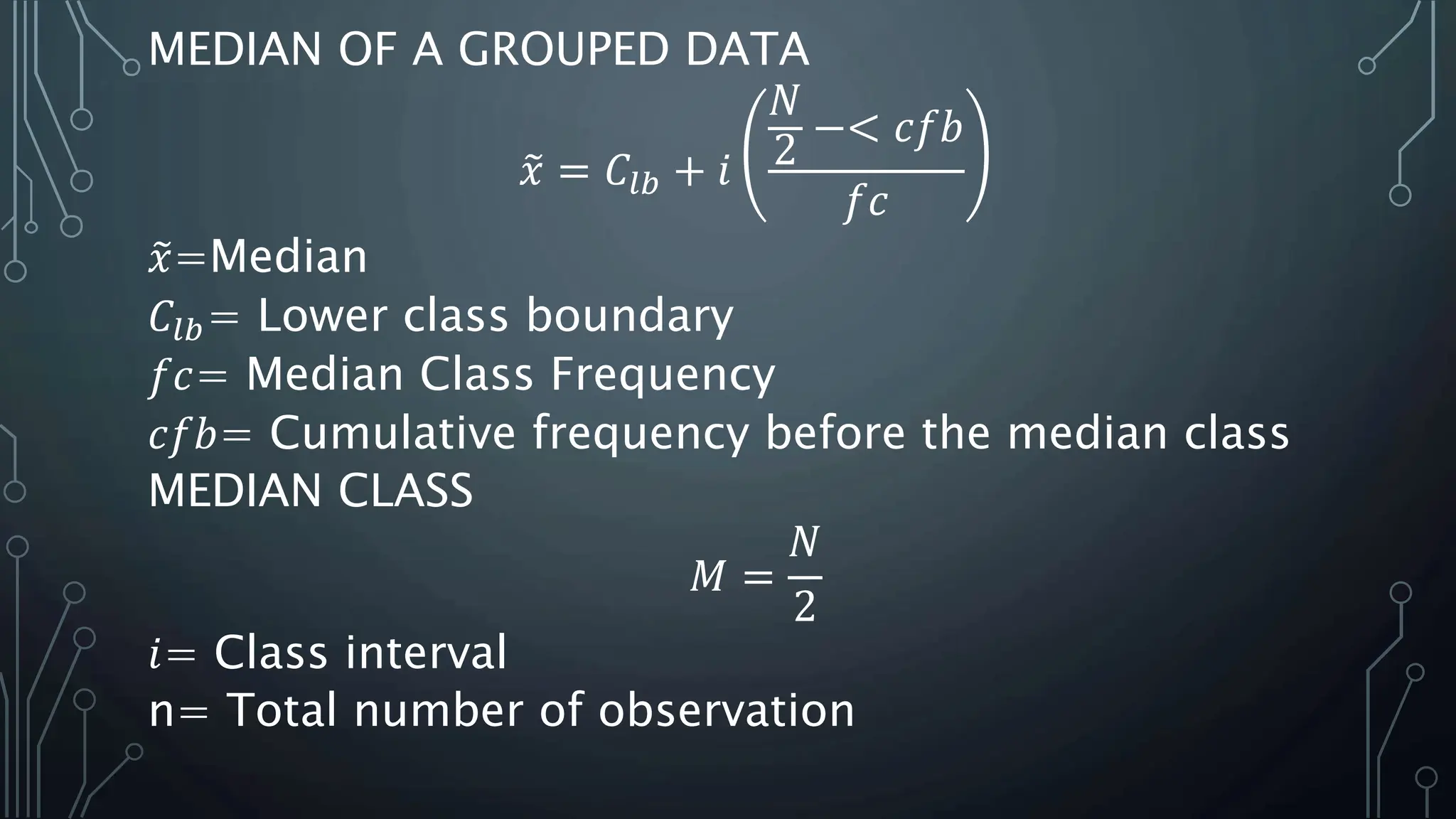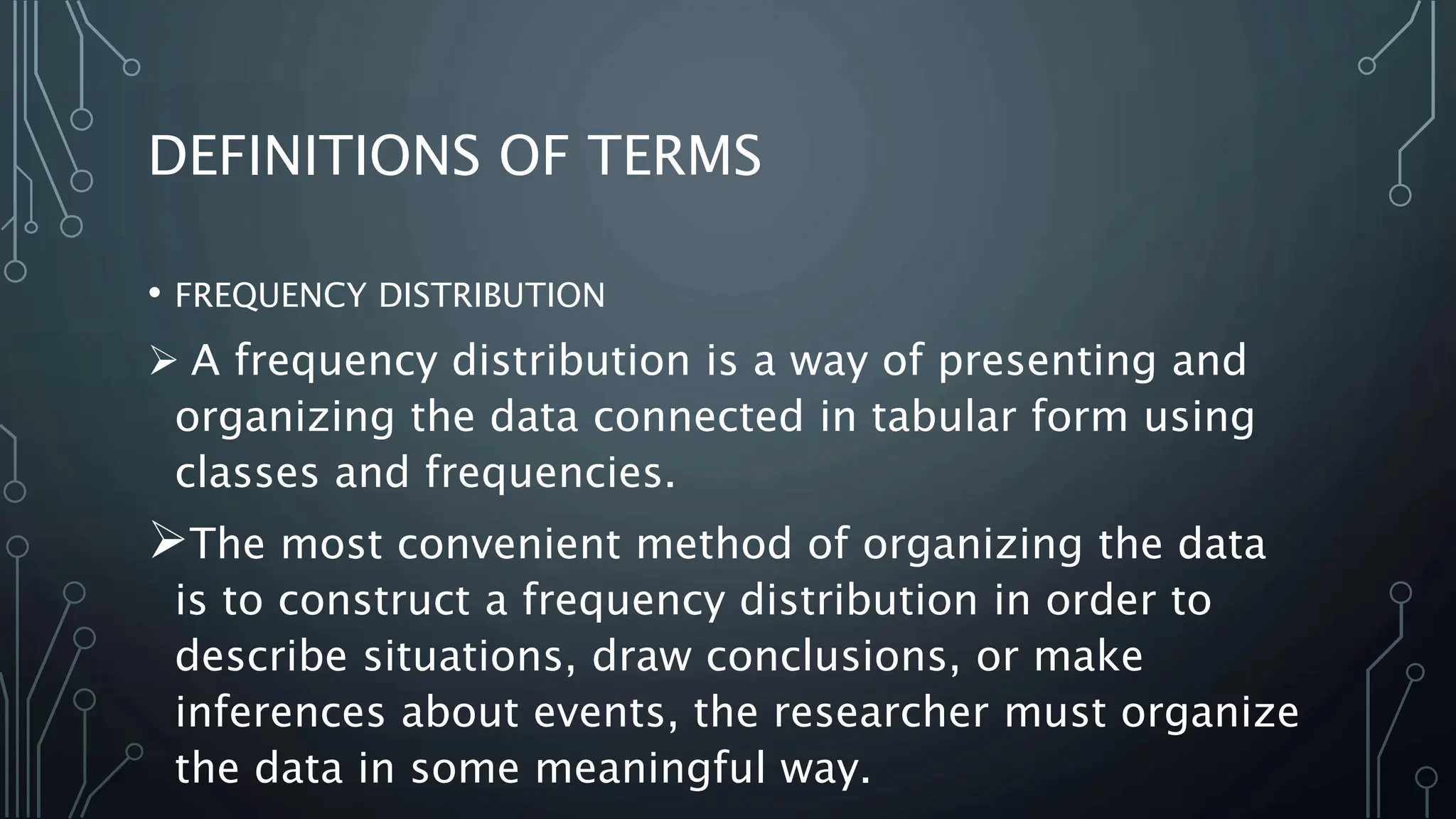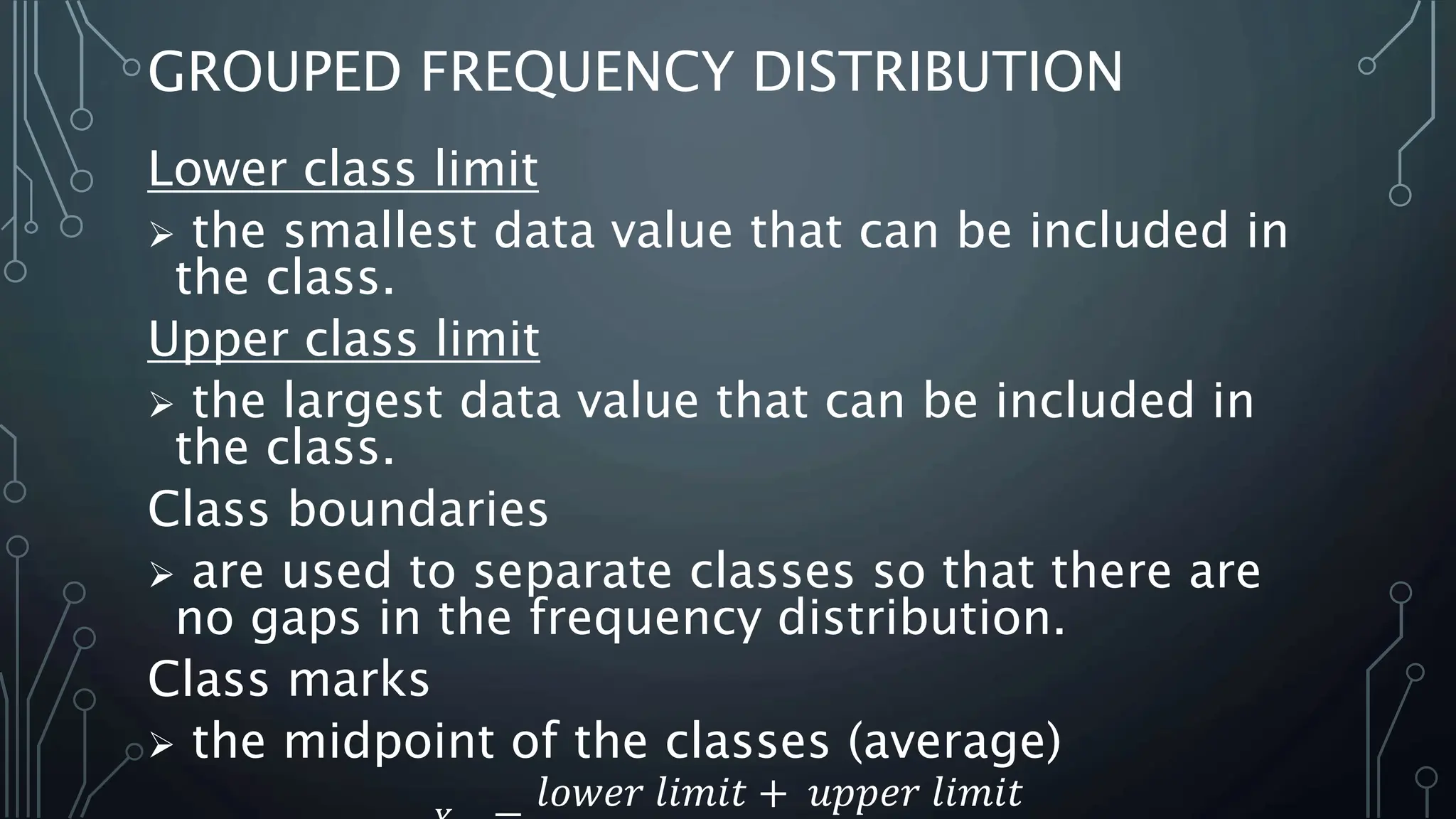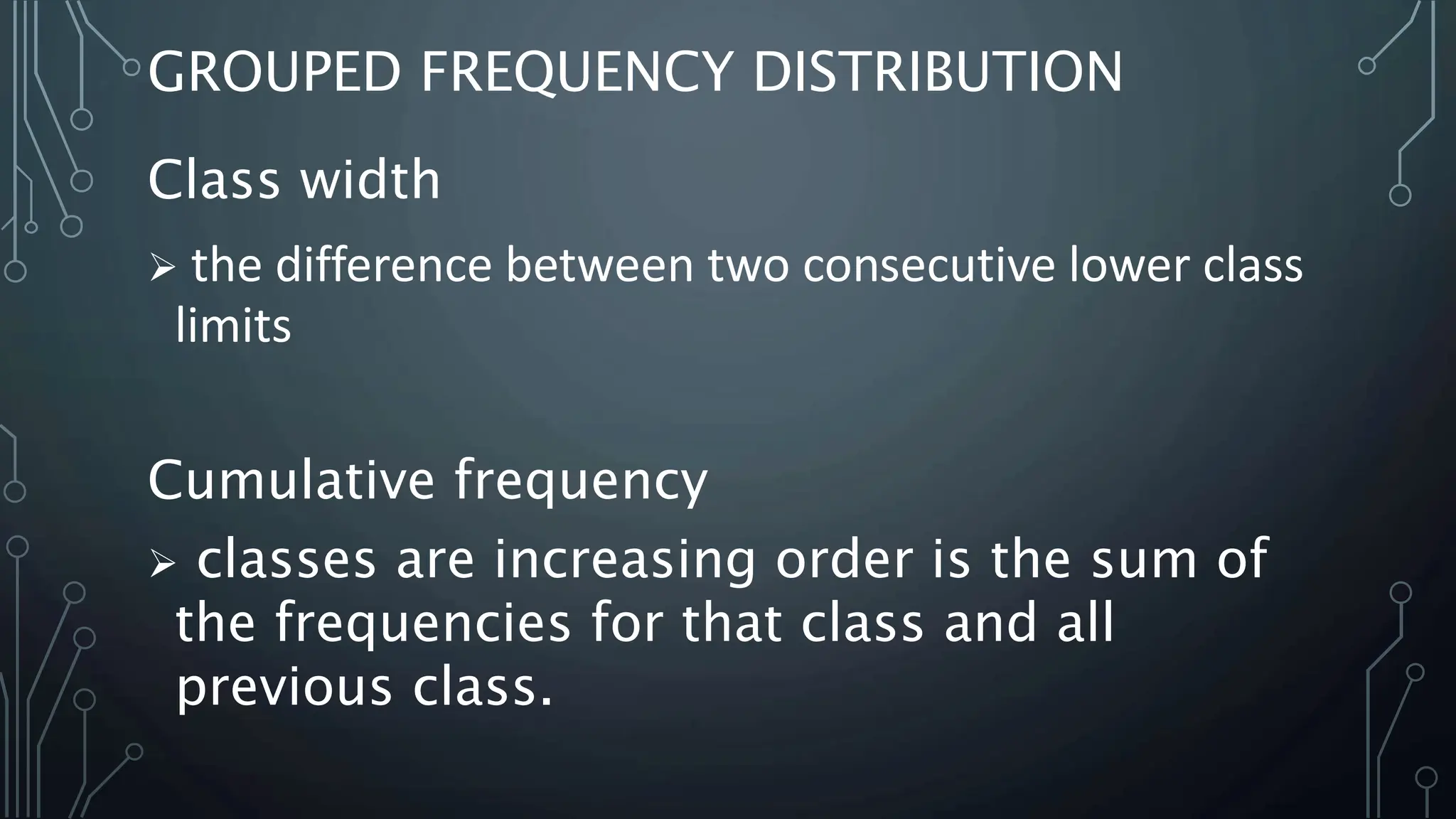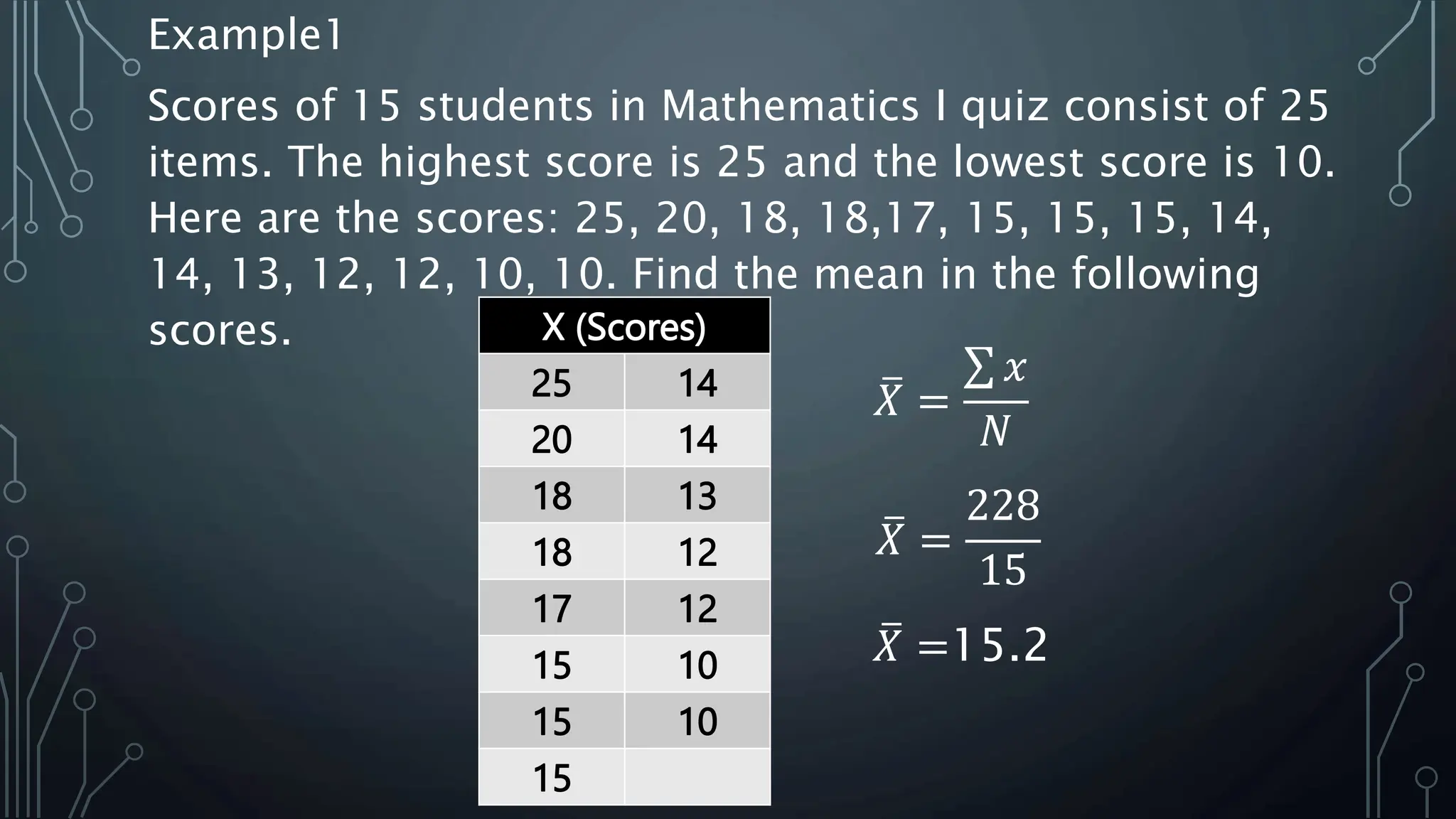The document defines various measures of central tendency including mean, median, and mode for both ungrouped and grouped data. It also defines key terms related to frequency distributions such as lower class limit, upper class limit, class boundaries, class marks, class width, and cumulative frequency. An example is provided to illustrate the construction of a grouped frequency distribution table involving 7 classes with a class width of 7 using data on exam scores of 40 students.



